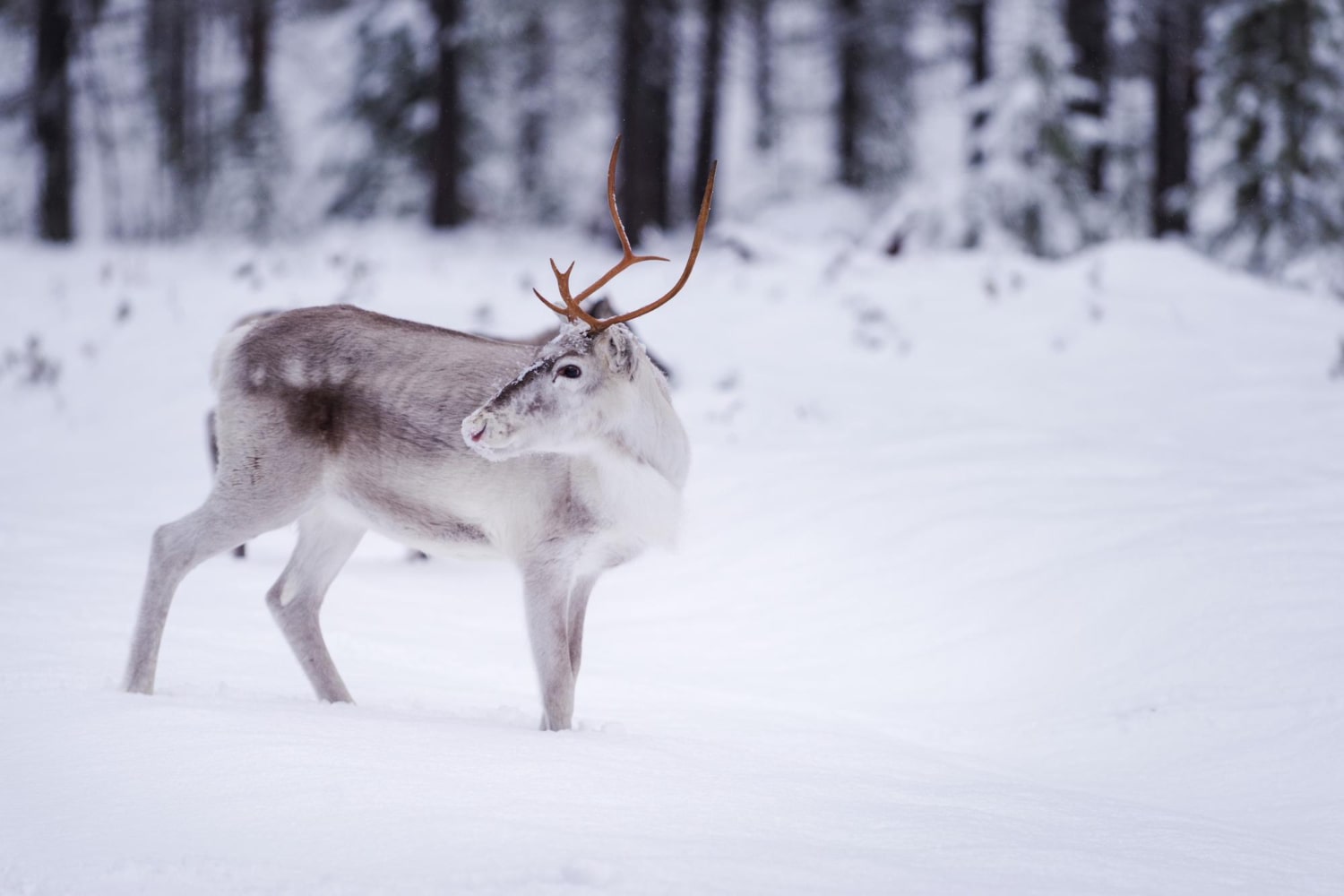Reindeer are animals that have fascinated people for centuries with their endurance, beauty, and ability to survive in the harshest conditions of the Arctic and the taiga. They have become an inseparable part of the culture of many northern peoples, who used them as transport, a source of food, and material for clothing. Reindeer play an important role in mythology and traditions, as well as in the modern economy of northern regions. They possess unique biological traits that allow them to adapt to life in the permafrost zone. Below are fascinating facts about these remarkable animals.
- Reindeer are the only members of the deer family in which both males and females grow antlers. In most other species, only males have them. Females use their antlers to defend food sources in winter, when competition is strongest. This makes them unique among hoofed animals.
- Reindeer antlers grow anew each year and are shed after the season ends. Males usually lose their antlers after the rut in autumn, while females keep theirs until spring. This difference is connected to the need for females to protect food access during pregnancy. It is one of the most interesting adaptations in the animal kingdom.
- Reindeer have special hooves that change their properties with the seasons. In summer they are soft and flexible, which helps when moving across wet ground and moss. In winter the hooves become hard, allowing the animals to dig through snow in search of food. This adaptation ensures survival in different conditions.
- In winter the main food of reindeer consists of lichens, especially reindeer moss. They are capable of scraping it from beneath thick layers of snow. In summer their diet expands to include grasses, mushrooms, berries, and leaves. This varied diet provides the necessary nutrients throughout the year.
- Reindeer are capable of covering enormous distances during migration. Some populations travel more than 5000 kilometers a year in search of food. This makes them one of the most migratory mammals on Earth. They move in large herds numbering thousands of individuals.
- Reindeer fur has a unique structure that ensures insulation. The hairs are hollow inside, which allows them to trap air and protect against cold. This type of coat enables them to withstand Arctic frosts. It also helps them stay afloat while crossing rivers.
- Reindeer eyes change color depending on the season. In summer their eyes are golden, while in winter they become blue. This is linked to adaptation to the changing levels of light in the north, where summers are bright and winters are marked by long darkness. This rare phenomenon improves their vision in Arctic conditions.
- Reindeer play a key role in the lives of many indigenous peoples of the North. For the Sami, Nenets, and Chukchi they serve as transport, food, and material for clothing and shelter. They also hold spiritual significance in rituals and myths. Without reindeer, survival in the Arctic regions would be almost impossible.
- In the tundra reindeer play an important ecological role. They regulate the amount of lichens and grasses, maintaining ecosystem balance. Their migrations help spread plant seeds. This makes them a keystone species in northern landscapes.
- Reindeer can run at speeds of up to 80 kilometers per hour. This ability allows them to escape predators such as wolves. They are also excellent swimmers and can cross wide rivers and lakes. Such versatility makes them highly resilient animals.
- These animals demonstrate strong social organization. They live in herds with established hierarchy. In summer the herds may number thousands of individuals, while in winter they split into smaller groups. This structure helps them adapt more easily to their environment.
- Reindeer are known for their variety of sounds. They can grunt, snort, and produce throat noises to communicate with one another. They are especially vocal during the mating season. Such sound diversity helps maintain contact within large herds.
- In some regions reindeer have been domesticated. They are used as draft animals for transporting loads and people. They are durable and can travel in places where machinery often fails. This makes them indispensable for inhabitants of the Far North.
- Reindeer also play a role in modern culture. They became symbols of Christmas thanks to the legend of Santa Claus, whose sleigh is pulled by reindeer. This image spread through literature, films, and cartoons. Today it is an inseparable part of winter celebrations.
- Reindeer populations are declining due to climate change and human activity. Melting permafrost and road construction disrupt their migration routes. This creates threats to many herds. In several countries programs are underway to protect these animals.
Reindeer are unique inhabitants of the northern latitudes, admired for their ability to adapt to extreme conditions. They are vital for both nature and culture and remain a symbol of endurance and harmony with the environment. These fascinating facts show how important it is to protect reindeer and their natural habitat. You might not know that reindeer are a true emblem of life in the Arctic.





